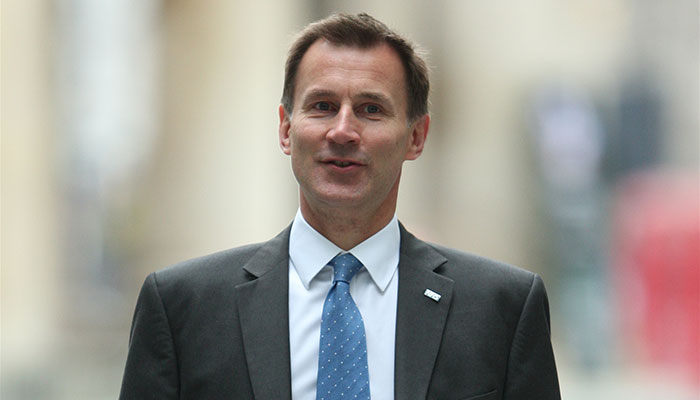
Chancellor Jeremy Hunt. Image © Shutterstock
As a general election comes into view, you can bet that any fiscal moments are going to be as much about politics as they are about economics. The move to independence for the Bank of England under Gordon Brown has taken away the potential lollipop of cutting interest rates pre-election but the sweetie box can in theory be opened up on the spend and tax side. And political dividing lines can be drawn.
The constraints of course are economic and political. If actions taken by government freak the markets too much, we get a Liz Truss episode. If they push up interest or inflation rates (or stop them coming down), that is bad politics.
The independent OBR presented a pretty grim set of new forecasts – albeit more optimistic than the Bank of England’s only a few weeks ago. Growth this year, although up on what it said back in March, is only due to be 0.6% and hardly rises next year to 0.7%, compared with the 1.8% it thought in March, and is still forecast to be an anemic 1.4% in 2025.
Inflation is down at last but unemployment is starting to tick up a bit. Household incomes in real terms continue to fall relative to 2019-20 and business investment, while undoubtedly helped by the Autumn Statement measures, continues to be fairly weak according to the OBR.
All this assumes the global situation does not deteriorate and that the lagged effects of the interest rises don’t last too long. The biggest driver of prosperity in the longer term – productivity – is set to remain pretty poor by historical standards, settling down according to the OBR at around 1%.
But for this – probably the last – Autumn Statement of the Sunak/Hunt era the biggest issue was seen to be the scale of debt. Nominal growth was higher than expected and inflation also helped make fiscal drag very lucrative although debt interest costs wiped a lot of this gain out.
Still the government’s main fiscal rule is pretty easy to pass – as the IFS and others have pointed out – only requiring the debt ratio to decline between years 4 and 5 in the future, something easily achieved with numbers on spending at that point that will probably never be achieved. Indeed, the spending projections for the future look even less realistic than they did last year especially for the ‘unprotected areas’ like the Home Office, Justice and Levelling Up.
That’s why most experts warned against using any apparent ‘fiscal headroom’ for tax cuts despite increasingly desperate calls from many Tory backbenchers, because if you had realistic numbers for future spending (just to keep the show on the road – not even to improve things) there would be no headroom at all.
But the chancellor and PM have tried to argue that we have now turned the corner in terms of the economy. This is a bit of a stretch given the economy has seen poor growth over the past year or so, that GDP per head is due to fall this year, that the government is forecast to have debt rising over the next few years (conveniently coming down in year five, 2028-29), and that inflation is still over double the 2% target. Nevertheless, that was their constant refrain.
Surprisingly, and given this confidence, there was hardly anything for key areas – both in terms of services but also politics – like the NHS, schools, social care and local government. And net zero was hardly a feature of the chancellor’s statement at all.
So they felt they had some room to play with, however unwise that is at this stage, and there were a few interesting baubles. The much-trailed tax cuts turned out to be around national insurance and business tax – both sensible places to cut if you want to and that should help the economy in the longer term.
But it is keeping the freeze on income tax thresholds that, of course, puts taxes up and helps ‘pay’ for these measures. IFS work suggests the gains to the average worker from the 2p cut to National Insurance will be more or less entirely offset by the frozen thresholds and other changes. Other rumoured tax cuts such as to inheritance tax, stamp duty and even a cut or promise of a future cut to income tax seem to have been left for use closer to the election in the March budget.
While it was welcome that the trailed idea of using a lower inflation rate to increase benefits was not carried forward, there was some harsh stuff in this area in terms of the obligations on the unemployed and the sanctions to be applied, no doubt trying to put the opposition in a tricky place. This was sort of half balanced by the increase in the minimum wage, following advice from the independent Low Pay Commission. Despite much talk, the triple lock stayed; the pensioner vote is too important to trifle with at this point in the electoral cycle.
PM Sunak made a big thing of long-term decisions in his Conservative Party conference speech this year and there were some important things that point that way in this Autumn Statement. But mostly this was about the short term. At least that was consistent with Sunak’s decision to bring back David Cameron despite his aggressive critique of the political leaders of the past 30 years, of whom Cameron was obviously one.
Is this enough? For the economy? For the Conservative Party? Or will the hard work fall to Rachel Reeves in a year’s time?












